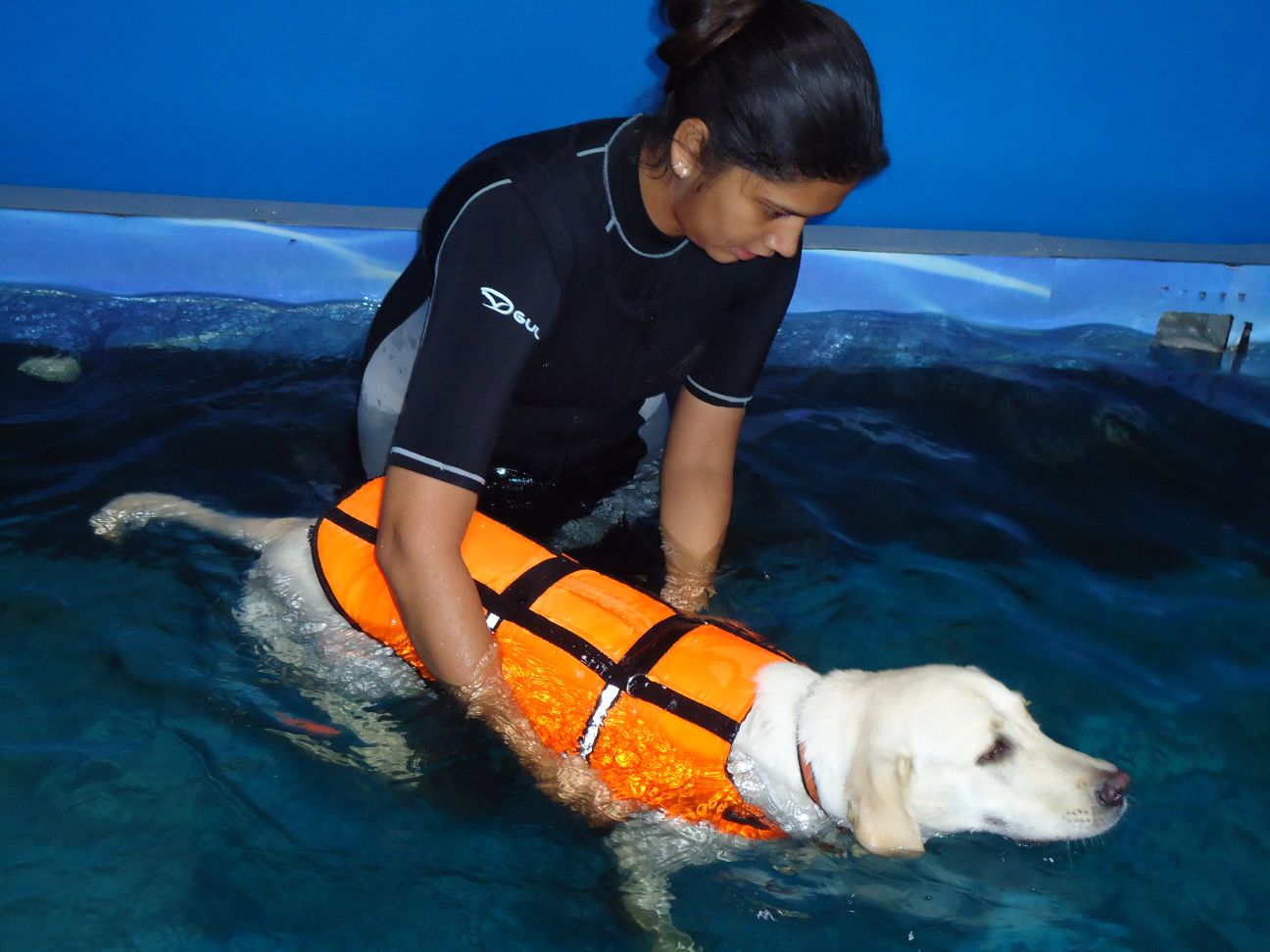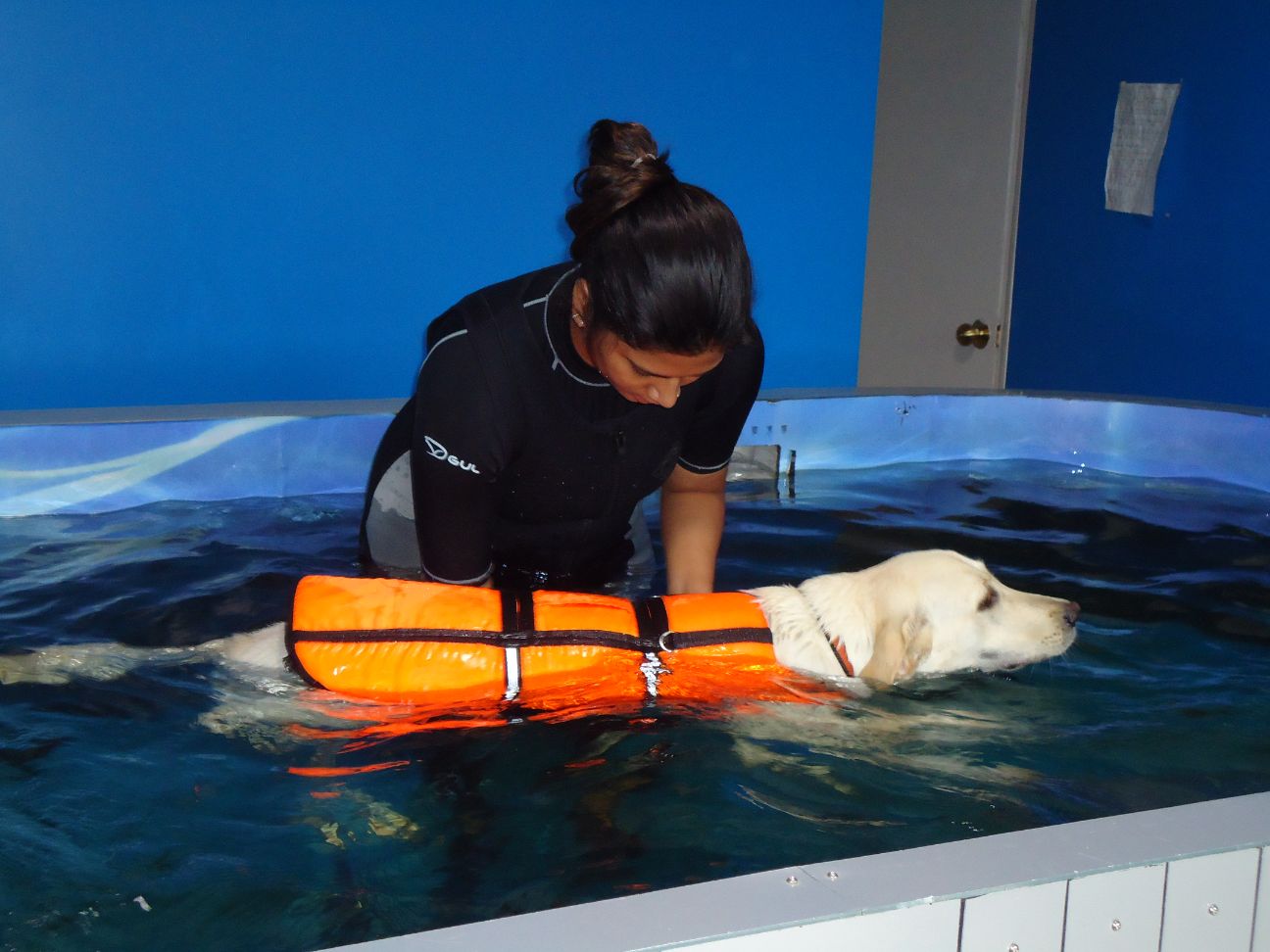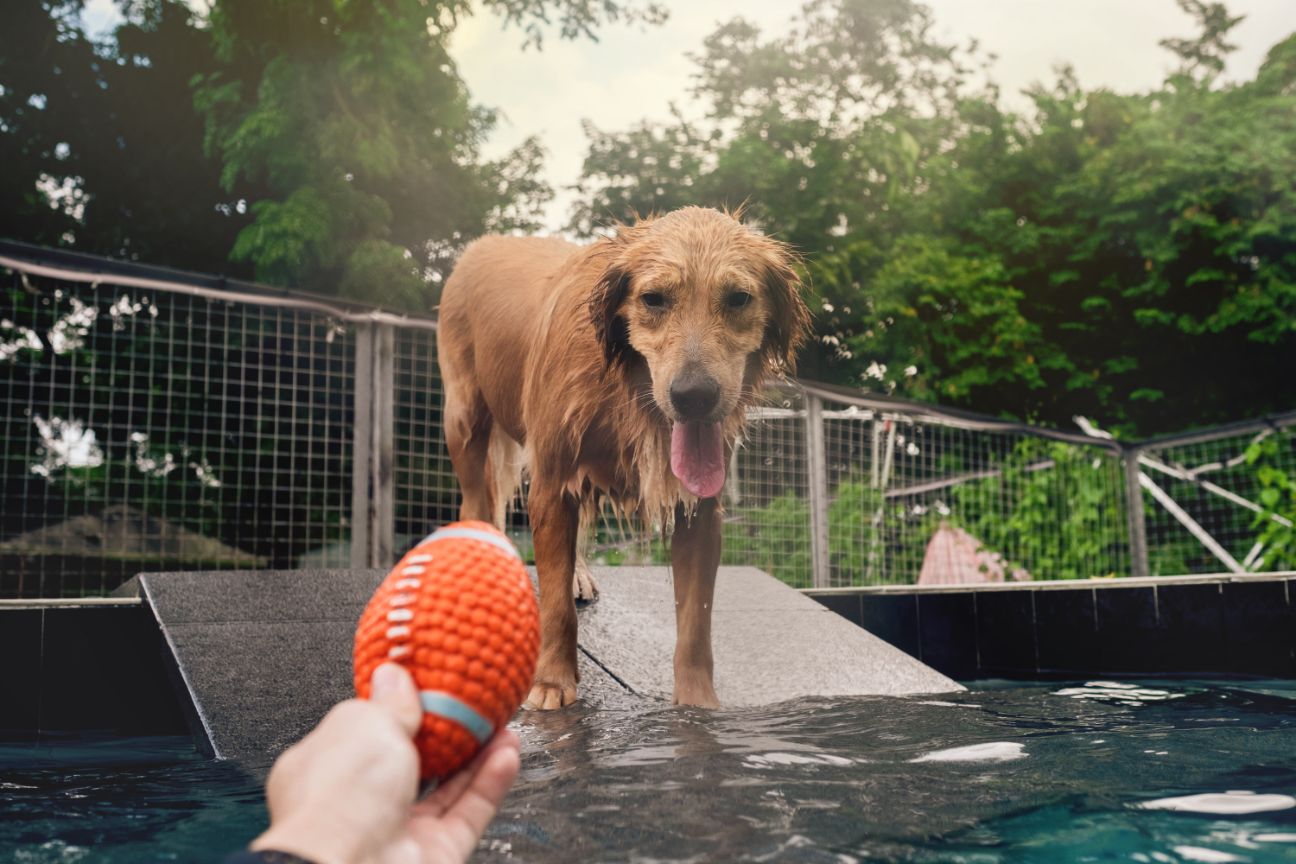As a Canine Hydrotherapist, I have helped ease chronic conditions ranging from dogs with hip dysplasia to obesity. Here’s some information on Canine Hydrotherapy, its applications and benefits.
What Is Canine Hydrotherapy?
Hydrotherapy is a form of physiotherapy that is used as rehabilitation support in chronic conditions, pre-operative therapy as well as during postoperative recovery. Water is known to have healing properties. Besides its own healing properties, water provides an environment that is non-weight bearing. This is an ideal situation, especially for animals.

When a physiotherapist works with human beings, they can tell the patients to bear the pain slightly and push themselves. This is very hard to achieve when you are working with animals. The water creates an environment of buoyancy that naturally allows the limbs to move. The water itself, at the right temperature, also has anti-inflammatory properties.
What Kind of Conditions Can Hydrotherapy Help?
- Hip Dysplasia
- Degenerative diseases
- Arthritis
- Cruciate ligament injuries
- Osteochondritis Dissecans (OCD)
- Obesity
- Cardiovascular ailments
- Trauma recovery

How Does It Work?
Using the water’s own properties, hydrotherapy is introduced gradually. Over time, the therapy sessions become challenging, demanding resistance and time. The main idea is to build the right kind of muscle mass and pattern the right range of motion. As the dog gets stronger, you can push the sessions to become harder. The buoyancy helps reduce stress on joints.
Usually, there are two kinds: one in a heated pool that maintains a temperature of about 28 degrees Celsius, and the other on a water treadmill wherein a treadmill is submerged underwater. The water treadmill is of great use for gait patterning, especially in spinal conditions.
A professional hydrotherapist will liaise with your veterinarian to plan the best program for your dog. They will also take pain management, general routine and other important information into consideration while planning the program.
What Is Not Hydrotherapy?
A random pool where your dog is allowed to splash about in is not hydrotherapy. Many dogs love swimming, and while it is a great exercise, it is not hydrotherapy.

Image Courtesy- Forona-Shutterstock
Dogs that have a medical condition should always seek out a professional hydrotherapist to help guide them through a proper program. Without proper guidance, you may end up doing more damage than good. Just like human beings, the dog will use the laziest form to swim, and this does not mean it is the correct form. So while a dog with hip dysplasia may swim freely and love it, if he is not observed and his range of motion is not corrected, you can make the dysplasia worse.
Free swims are very good for absolutely healthy dogs who have no injuries or chronic conditions.

Image Courtesy- Forona-Shutterstock 2
Contraindications
Caution: A very big misconception is that all dogs can swim. All dogs cannot swim, and some can also drown. So it is important to be very careful with first-time swimmers!
Dogs with epilepsy have to be handled very carefully and hydrotherapy is not always an option. Any wounds, unhealed sutures, skin problems and infectious diseases are contraindicatory to the safety of your dog as well as that of others. High-stress dogs or aqua-phobic dogs will also not gain from hydrotherapy. The stress will outweigh the gains!